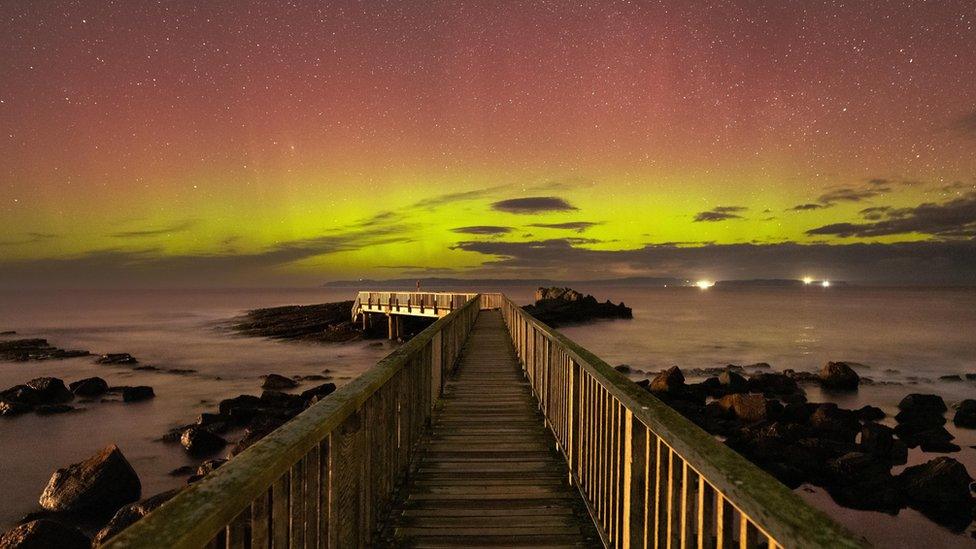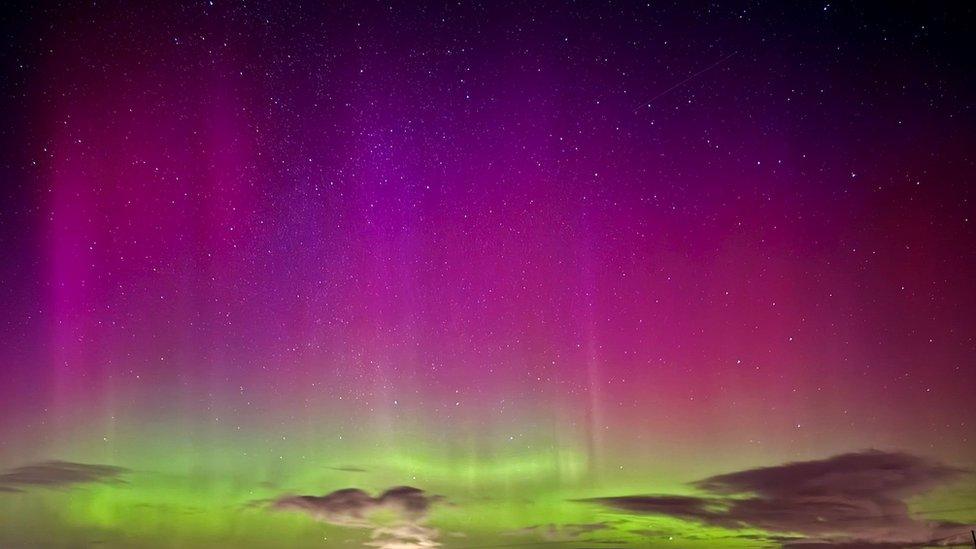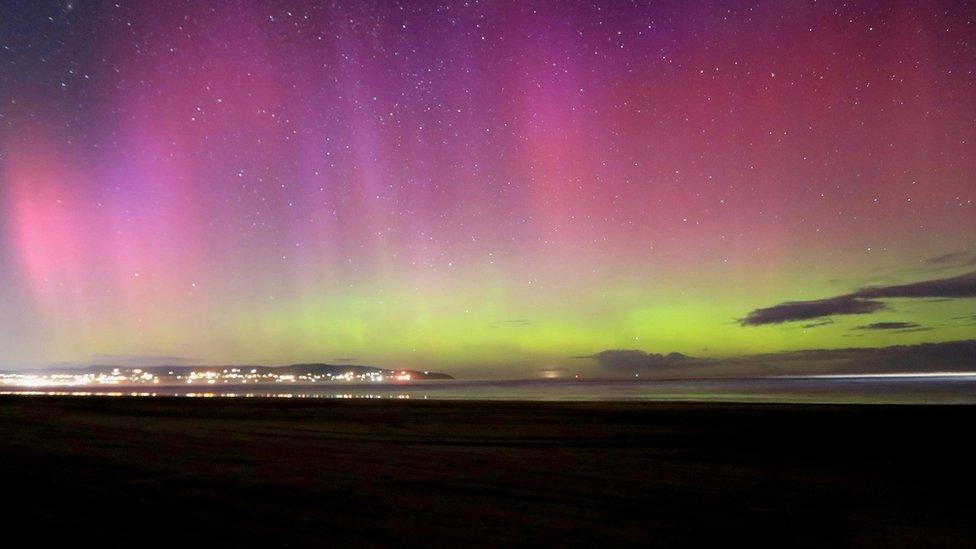Northern Lights: The challenges of capturing them on camera
- Published

The lights captured at the Ballycastle beach wooden walkway in County Antrim
The Northern Lights put on a dazzling display for photographers across the island of Ireland on Sunday night.
However, unlike countries closer to the Artic Circle, the spectacle is often more sporadic and less intense further south.
Ireland's more southern latitude places it on the periphery of the aurora borealis zone.
Photographers face unique challenges that make the pursuit of these elusive colours a test of skill and patience.

The Sperrin Mountains
"It's all about perseverance and determination," according to photographer Rachel Cassidy who caught the display on camera.
"I've had this passion for the Northern Lights since I was a child," she told BBC News NI.
"I've always wanted to go to Iceland to see them but you don't need to travel that far."
Cloudy sky problems
Changeable weather conditions, however, also present a challenge with clear skies a prerequisite in observing the aurora.

The lights captured over Benone Beach in County Londonderry
Frequent cloud cover and rain often make it a waiting game.
Then there is light pollution, often associated with urban areas, which poses another significant obstacle.
"The cloud can be a challenge but sometimes you get lucky with some gaps in the cloud," said Rachel.
"There is very little light pollution where I live, so I am quite fortunate.
"There's a real buzz when it happens but you have to have a passion for it - it's not for everyone."
Professional camera
It is worth noting that what is seen in photographs is not necessarily what can be viewed with the naked eye.
Passionate photographers are often armed with advanced camera equipment to capture the natural wonder.

Boho in County Fermanagh
According to photographer Colleen Webb, that is because a camera captures more light on the sensors than the naked eye.
"You can probably capture a bit more with a mobile phone but with a more professional camera, like a DSLR, ever more can be seen," she said.
"You would have to make sure the images are sharp and in focus and then you have to adjust the exposure and shutter speed.
"All of that together allows you to capture more light."
Top tips for great shots
While the chances of seeing or capturing the lights on camera can be quite difficult, Colleen had this advice:
Keep an eye on the forecast to make sure the sky is clear
Go to a dark area with no lights and allow your eyes to adjust and you can often see a bit of the light
If you are in your car to keep warm, don't have your car lights on - you won't be able to see it and you might ruin the opportunity for others
Related topics
- Attribution
- Published4 March 2024

- Published4 March 2024
